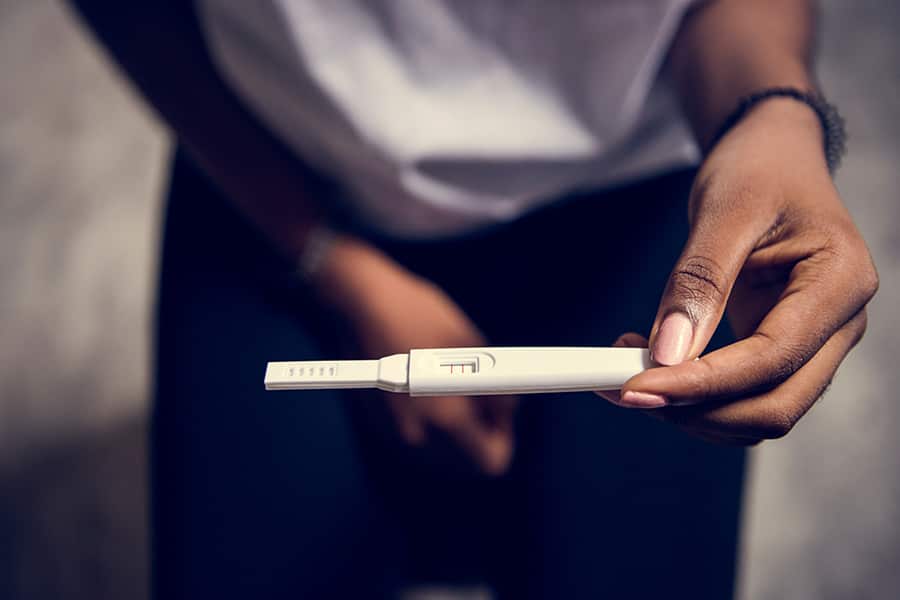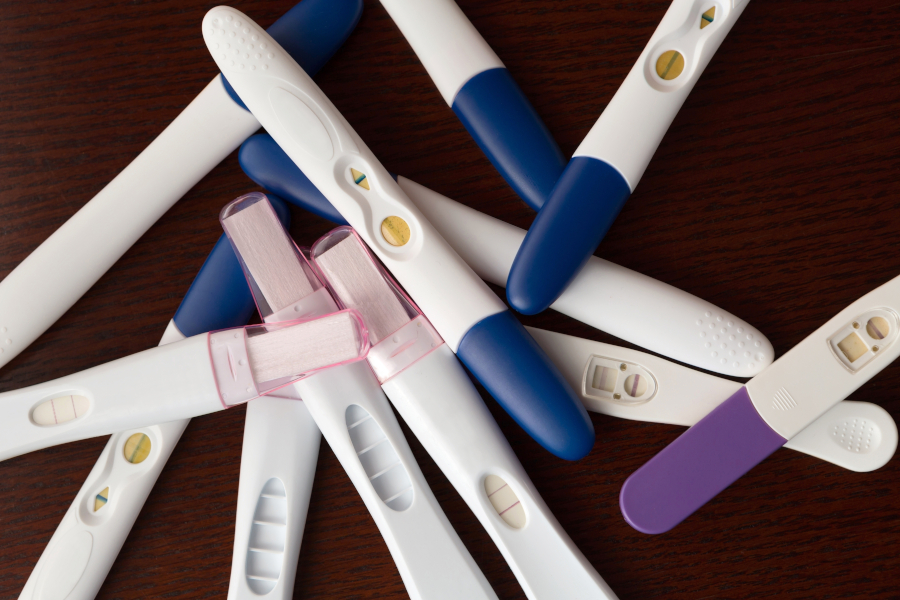Taking a pregnancy test is one of the most emotionally charged moments in a person’s life. Whether you are hoping for a positive result or not, the process can bring anxiety, excitement, and many questions. Home pregnancy tests are widely available, affordable, and easy to use—but they can also be confusing if you are not sure how they work or how to read the results correctly.
This blog will guide you through everything you need to know about home pregnancy tests: how they detect pregnancy, when to take one, how to interpret positive, negative, and faint lines, and what to do next based on your result. Whether this is your first test or your tenth, understanding how they work will help you feel more confident and prepared.
How Do Pregnancy Tests Work?
The Science Behind the Test
All home pregnancy tests work by detecting a hormone called human chorionic gonadotropin (hCG) in your urine. This hormone is produced by the placenta after a fertilized egg attaches to the lining of your uterus—usually about 6 to 12 days after ovulation. Once implantation occurs, your body starts producing hCG, and the levels increase quickly, doubling every few days in early pregnancy.
What You See on the Test
Most tests have a test line and a control line:
- The control line always appears if the test is working properly. It shows the test was used correctly.
- The test line appears only if hCG is detected in your urine, which means you are likely pregnant.
Some tests use a plus sign, digital display (like “Pregnant” or “Not Pregnant”), or vertical and horizontal lines to display the result. The packaging will explain how each specific test shows a result, so it is important to read the instructions before you begin.

When Should You Take a Pregnancy Test?
Timing Is Everything
Many people want to take a test as early as possible, especially if they are experiencing symptoms. But taking it too early can result in a false negative result. A false negative is when something is reported as negative when it is actually true.
For the most accurate results:
- Wait until at least the first day of your missed period.
- Some tests advertise “early detection” and claim to give results up to 5–6 days before your missed period, but the earlier you test, the more likely it is that the hCG levels will be too low to detect.
Best Time of the Day to Test
The most reliable time to take a test is in the morning, with your first urine of the day. Morning urine is more concentrated and may contain higher levels of hCG if you are pregnant.
How to Take a Pregnancy Test
Step-by-Step Instructions (General Guide)
Each brand of pregnancy tests may have slightly different instructions, but the basic steps are usually the same:
- Read the Instructions
Even if you have taken a test before, read the instructions that come with the specific brand you are using. Timing and reading the results incorrectly is a common reason for confusion. - Collect Your Sample
You can either hold the test stick in your urine stream or collect urine in a clean cup and dip the stick in. - Wait the Recommended Time
This is usually 2 to 5 minutes, depending on the brand. Do not check too early or too late—wait the exact time listed. - Read the Result
Look for the test and control lines (or digital message). Compare them to the examples in the instructions.

Understanding Your Pregnancy Test Results
Positive Result
If you see two lines, a plus sign, or a digital message that says “Pregnant,” you have produced a positive result. Even if the second line is faint, it still counts as positive.
A positive result means hCG has been detected, which almost always indicates pregnancy. However, false positive results are rare but possible in certain cases (see the section below on “What Can Affect Your Results”). A false positive is when something is reported as positive when it is actually false.
Next Steps:
- Contact a healthcare provider to confirm your pregnancy with a blood test or an early ultrasound.
- Begin thinking about prenatal care, whether or not you plan to continue the pregnancy.
Negative Result
If you see only one line on a line test (the control line), or a digital test says “Not Pregnant,” your result is negative, meaning the test did not detect hCG in your urine.
A negative result could mean:
- You are not pregnant.
- You tested too early.
- Your urine was too diluted.
- There was an error in how the test was taken.
Next Steps:
- If your period does not start within a few days, test again in 2–3 days.
- If you continue to get negative results but still miss your period, consult your doctor to rule out other health concerns.
Faint Line: What Does It Mean?
A faint test line often causes the most confusion. If the control line is dark and the test line is barely visible, what does it mean?
In most cases, a faint line still means you are pregnant; simply means your hCG levels are still low, possibly because you are early in your pregnancy.
Tips:
- Retest in 48–72 hours. If you are pregnant, the line should become darker as hCG level increase in your body.
- Try testing with first-morning urine for a clearer result.
What Can Affect Your Pregnancy Test Results?
False Positives
Although rare, a pregnancy test can sometimes show a positive result even if you are not pregnant. Possible reasons include:
- Evaporation Lines: These may appear if you check the test after the recommended time. They are colorless and often mistaken for a positive result.
- Certain Medications: Fertility treatments or medications that contain hCG may cause a false positive.
- Medical Conditions: Ovarian cysts or rare medical conditions (like a molar pregnancy) can sometimes affect hCG levels.
False Negatives
A negative test does not always mean you are not pregnant. Reasons for a false negative include:
- Testing Too Early: hCG levels may not be high enough to detect.
- Diluted Urine: Drinking too much fluid before the test can dilute your urine.
- Incorrect Usage: Not following the instructions (wrong timing or poor technique) can affect accuracy.

What to Do After a Pregnancy Test
If Positive
- Confirm with a Doctor: A healthcare provider can do a blood test to confirm the pregnancy and check hCG levels.
- Schedule Prenatal Care: Early prenatal care is important for both you and your baby’s health.
- Discuss Next Steps: If you are unsure what to do next, talking to a doctor, midwife, or counselor can help you explore your options.
If Negative
- Monitor Your Symptoms: If you miss another period or continue to have symptoms of pregnancy, take another test or consult a doctor.
- Look Into Other Health Factors: Sometimes irregular cycles or stress can delay your period.
Tips for the Best Results
- Check Expiration Dates: Always use a test that is in-date for accuracy.
- Use First-Morning Urine: Especially if you are testing before your expected period.
- Follow Instructions Exactly: Do not guess the steps—timing matters.
- Avoid Drinking Too Much Before Testing: This keeps urine more concentrated.
- Retest in a Few Days if Unsure: Hormone levels can rise quickly, and a second test may give a clearer answer.
Home pregnancy tests are powerful tools that give fast and easy answers during one of life’s most important moments. While they are generally very accurate when used correctly, understanding how to take them and interpret the results can make a big difference in clarity and confidence.
Whether your test result is positive, negative, or somewhere in between, what matters most is what you do next. Make sure to follow up with a healthcare provider for confirmation, support, and guidance on the journey ahead.
Your body is unique, and so is your experience. Trust your instincts, ask questions, and seek support if you need it. Knowing how to read a pregnancy test is the first step toward making informed, empowered decisions about your reproductive health.
This information is presented as a general guide to understanding how to read and understand a pregnancy test result. It is for informational purposes only. The information provided is not intended to be the only information available about how to read and understand a pregnancy test result. The material provided is not expected to be a substitute for advice or information from your baby’s physician or health care provider.
If you have any questions, concerns, fears, apprehensions, unease, or worry about How to Read and Understand a Pregnancy Test Result contact your or your baby’s health care provider immediately.



